How to Cook Pasta
Updated: May 19, 2023
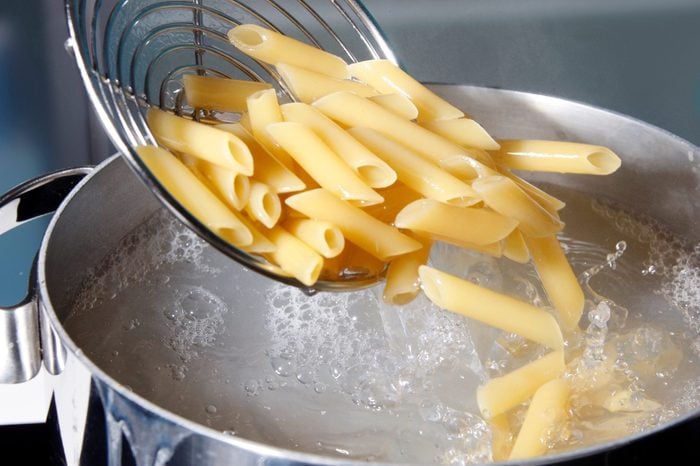
Learn how to cook pasta perfectly for any type of recipe, from when to salt the water to how to tell when the noodles are done.
While it’s hard to go wrong with a comforting bowl of spaghetti and meatballs or cheesy baked ziti, there are still lots of things that you can decidedly do right—starting with how you cook the noodles. Should you rinse the pasta? How important is it to salt the water before adding the pasta? Attention to details like these can turn an easy weeknight dinner into a family favorite. We broke it down so you know how to cook pasta perfectly for every recipe.
How to Cook Pasta, Step by Step
Follow these steps for cooking dried pasta (the shelf-stable kind you buy at the grocery store) when making hot dishes. When it comes to how much pasta to make for each person, the general rule of thumb is 2 oz. of long noodles like spaghetti or 1 cup of short pasta shapes like rigatoni per person.
If you’re whipping up a potluck pasta salad, scroll down for details on how to cook pasta for cold pasta salads. For more on how to cook fresh pasta—and how long fresh pasta lasts—including homemade pasta, here’s everything you should know about fresh pasta vs. dried pasta.
Choose the correct pot
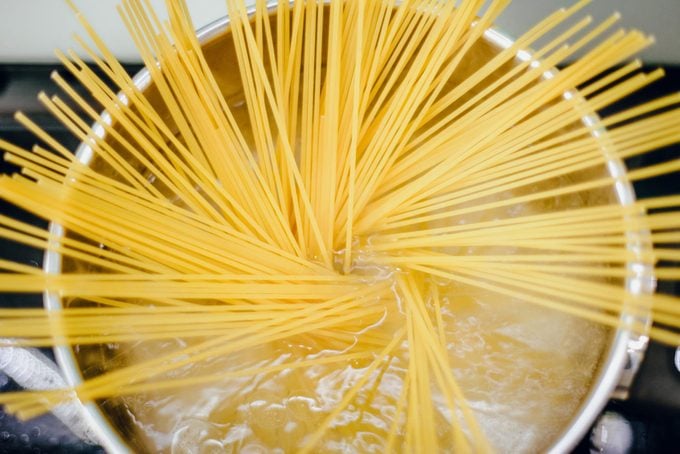
Pick a pot that’s big enough for the amount of pasta you’re cooking. You’ll need 1 gallon of water per pound of dried pasta; otherwise, there isn’t enough water for the pasta to release its starches into as it cooks so you’ll end up with sticky noodles.
Choosing a cooking vessel that’s big enough is a safety consideration, too, so you don’t find yourself trying to stop a pot of scalding water from boiling over.
Bring the water to a rolling boil
We know it takes patience to wait for the water to go from a bubbling simmer to a rolling boil. But waiting those few extra minutes is worth it. If you put the noodles in before the water is at a rolling boil, it’ll be harder to monitor the cook time accurately, which can lead to gummy, soft, overcooked pasta.
Salt the water—more than you think
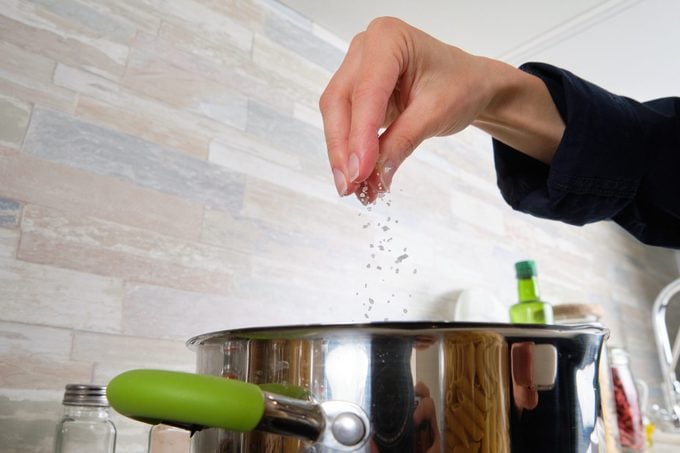
If you pay attention to nothing else when cooking your pasta, make sure you salt your pasta water! Admittedly, I spent the first few years on my own out of my parents’ house not salting my pasta water. But by skipping this step, I was missing the only opportunity to add flavor to the noodles themselves. As the noodles boil, they soak up the salt from the water, so each noodle is salted and flavorful even before you add your marinara, bolognese or Alfredo sauce.
Put 1-1/2 tablespoons of kosher salt into the water for every pound of pasta, or for every gallon of water in the pot. (We prefer kosher salt here, but you can use table salt or sea salt if that’s what you have handy.) However, Taste of Home Deputy Culinary Editor James Schend says that several Italian chefs have told him the water should be “as salty as the ocean”—that’s roughly 2 to 3 tablespoons in a large pot of water. So, you can experiment with the amount of salt you like in your pasta water, as long as you start with 1-1/2 tablespoons per pound of pasta!
Add the salt to the water after it’s already boiling, so the salt dissolves right away and doesn’t sit at the bottom of the pot.
Stir the noodles when you pour them in
Don’t give long noodles like fettuccine and spaghetti the chance to stick together—stir them as soon as you put them in the water, and make sure the entire noodle is submerged. Stir again every few minutes while the noodles are cooking, even for short-cut noodles. Here are more tips on how to make spaghetti noodles not stick together.
How to tell when the noodles are done
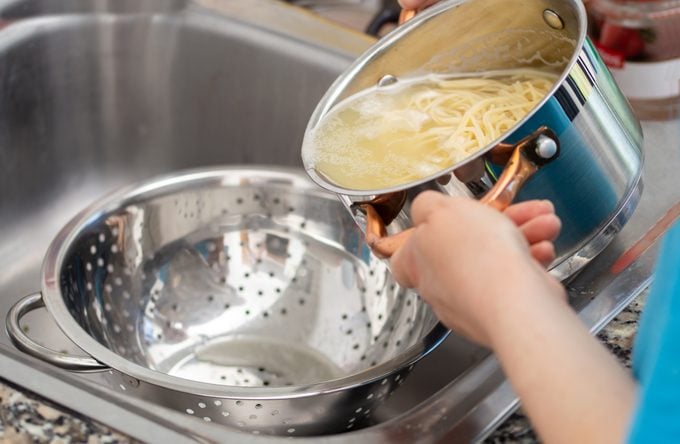
We recommend you cook your noodles al dente. It is the Italian way, after all! If you’re wondering what al dente means, it translates to “to the tooth” in Italian, and means your noodles are cooked but still a tiny bit chewy—not completely soft all the way through.
The amount of time it takes your noodles to reach al dente depends on the pasta shape that you’re cooking, so you’ll want to take a peek at the recommended cooking time on the box. Taste of Home Senior Food Stylist Shannon Norris suggests you check on the doneness of your noodles (read: taste them) 1 to 2 minutes before the recommended time is up, just to be sure you don’t overcook them.
Before you drain your noodles, dip a measuring cup or ladle into the pot to get about a cup of pasta water. Why save pasta water? You can add a bit of the starchy, salty water in the next step to help thicken your sauce and bind it to the pasta.
Don’t rinse the noodles after draining
The starches on the surface of cooked noodles allow the sauce to cling to them. If they’re rinsed, the sauce slips right off—and it’s even worse if you toss the noodles in olive oil after cooking. So don’t rinse your pasta!
If you’re worried about the noodles sticking together in the colander without rinsing them, you’re not working fast enough. Your pasta sauce should be ready to go when the noodles are done cooking, so you can combine the pasta and sauce right away. Here’s where that reserved pasta water comes in: It can help combine the pasta and sauce, and add a silky richness to the dish.
How to Cook Fresh Pasta
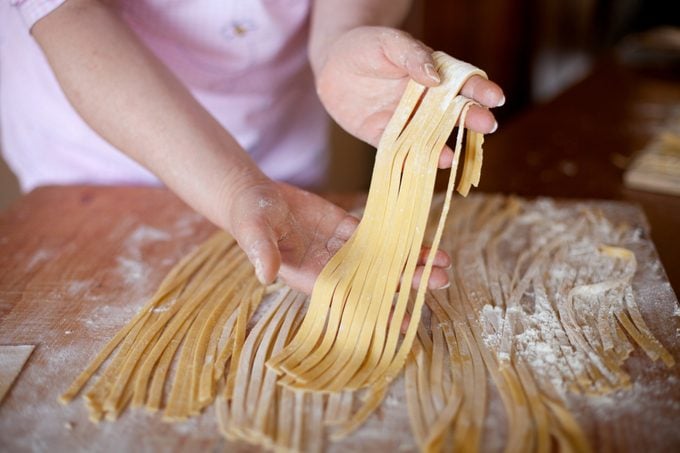
When it comes to how long to cook fresh pasta, keep in mind that fresh pasta takes significantly less time to cook than dried pasta, so don’t walk away from the stove once you get started! It’s not possible for fresh pasta to reach al dente—so don’t fret if the pasta is softer when you serve it.
Pasta shapes like ravioli, tortellini and gnocchi will float to the surface when they’re done, making it that much easier to know when to transfer them to your prepared sauce or soup.
Although you can buy fresh pasta in the refrigerated section of your local grocery store, making homemade pasta isn’t as hard as it might seem. It’s worth it if you have some extra time.
How to Cook Pasta for Cold Pasta Salads
When you’re planning to make a cold pasta salad, you’ll still need to pick the right size pot, bring the water to a rolling boil, salt the water, stir the noodles and cook the noodles to al dente. (Pasta cooked beyond al dente will get mushy and soft when it sits in the pasta salad dressing for hours.)
But, unlike with other pasta dishes, you will want to rinse the noodles with cold water after you’ve strained them to get rid of the extra starch. While that starch is great for hot dishes, it will soak up the salad dressing and leave your pasta salad drier and less flavorful than it should be.
Something else to keep in mind when making cold pasta salads is opting for the right pasta shape. You usually want shorter cuts, like farfalle (bowtie), penne and macaroni.
How to Store Cooked Pasta
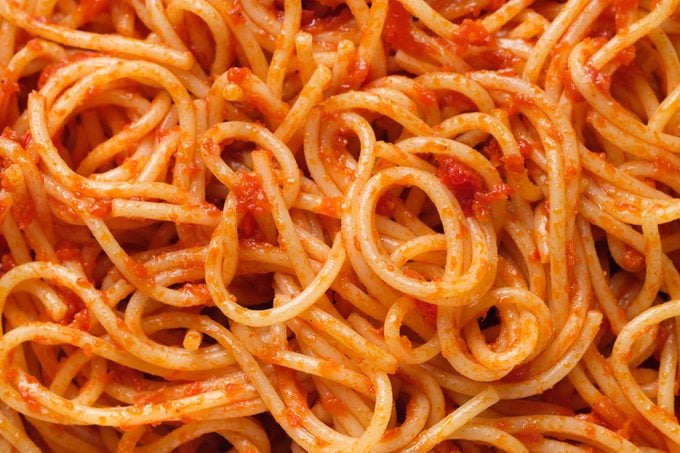
If you have leftovers, store your pasta dish in an airtight container in the refrigerator.
Or, if you’re working ahead, you can store cooked, undressed pasta so it’s ready to use when you need it.
“Cook your dried pasta to al dente as normal and drain, saving some pasta water for your sauce,” Deputy Culinary Editor James says. “Then, toss the warm pasta with a few tablespoons of olive oil. I know this is a no-no for normal serving, but the oil helps keep the pasta from drying out when you store it in the fridge—plus, we’ll get rid of the oil a little bit later.
Once the pasta cools down enough to handle, put the pasta in an airtight container and refrigerate for up to 2 days. When you’re ready to serve, just pour the pasta into boiling, salted water for 30 to 45 seconds. This will remove almost all of the oil from the pasta, so it shouldn’t be a problem getting your sauce to cling to the pasta.”
Now that you know exactly how to cook pasta, put your knowledge to use with our 5-star pasta recipes.
